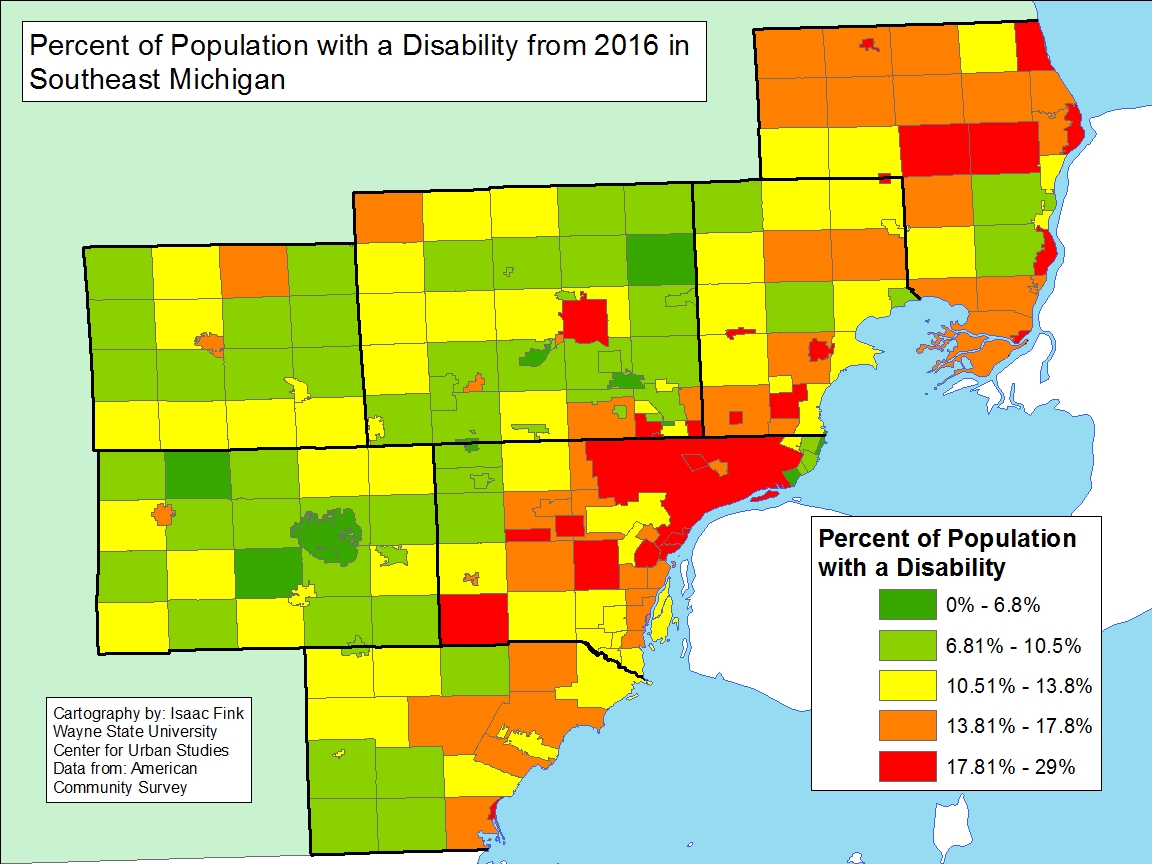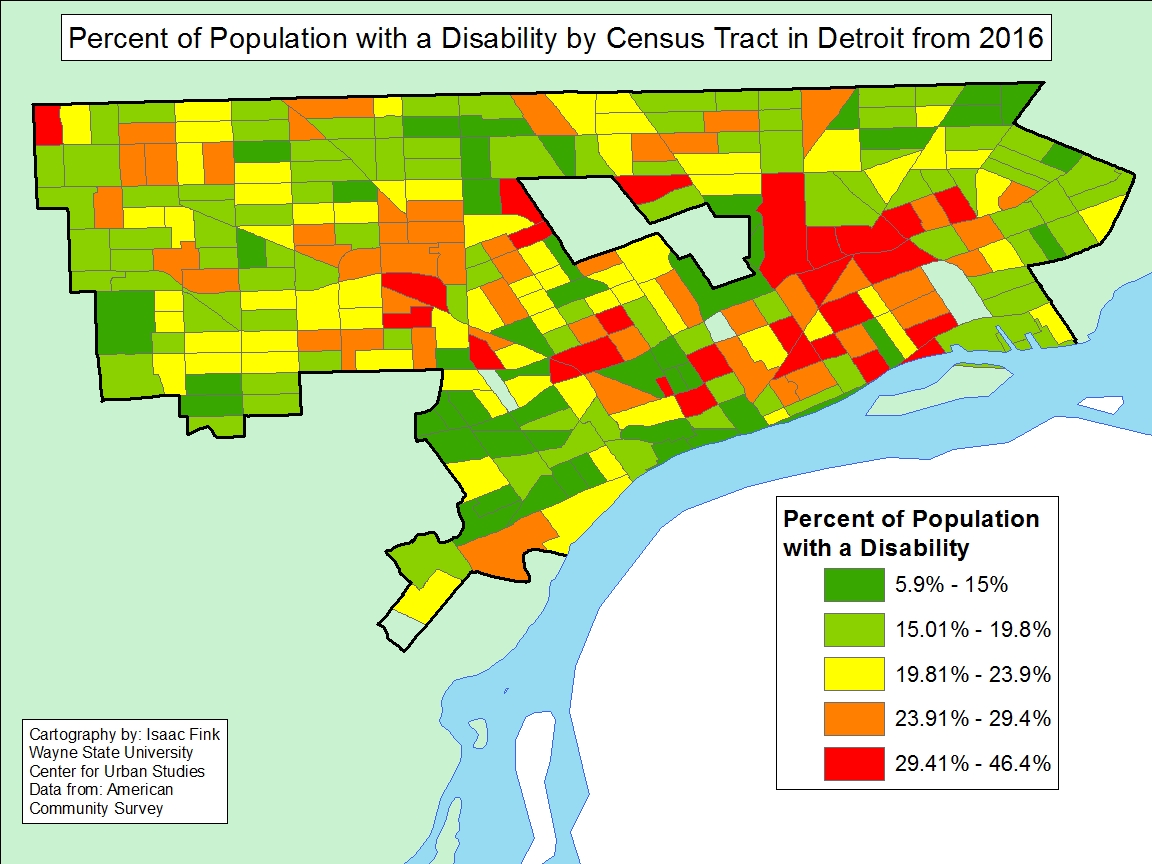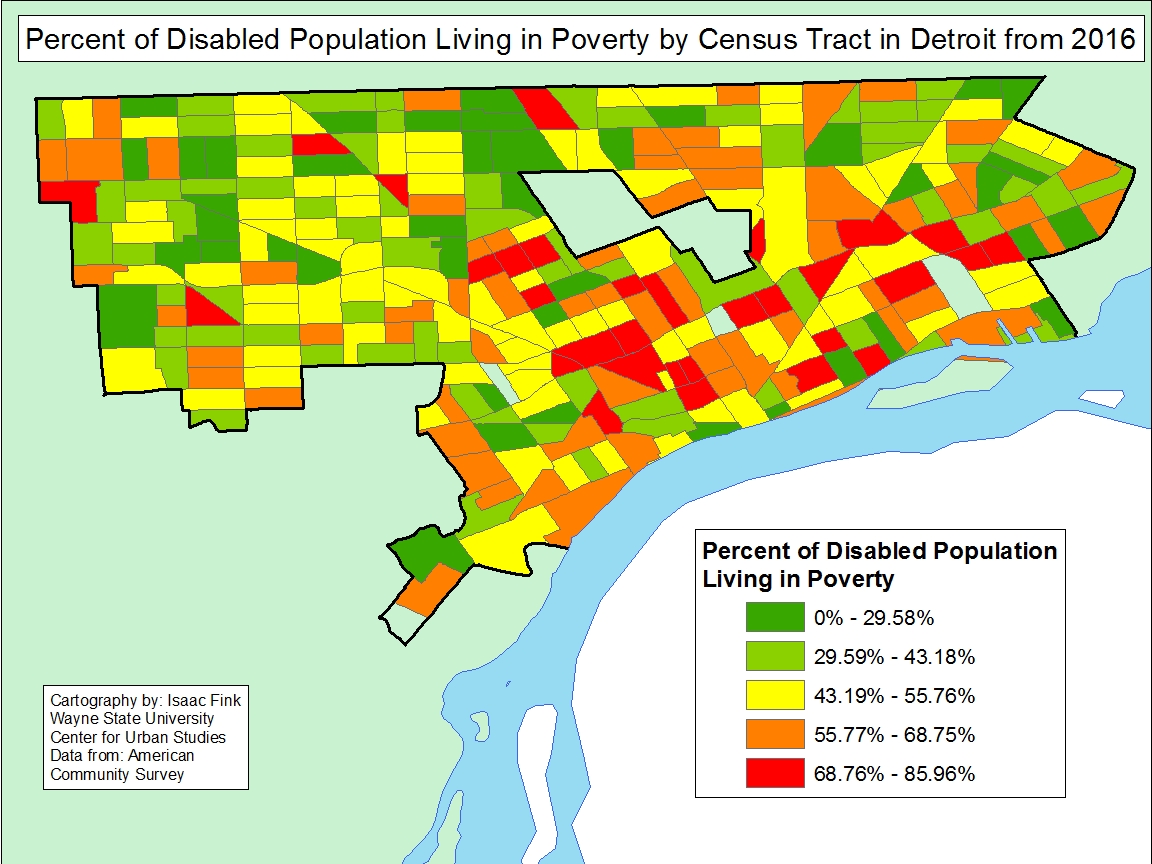In 2016 Royal Oak Charter Township had the highest percentage of residents with disabilities at 29 percent, according to the U.S. Census Bureau. The five cities in the region with the highest percentage of residents with disabilities were:
| Royal Oak charter township | 29 |
| Hazel Park city | 25.8 |
| Port Huron city | 23.7 |
| Memphis city | 22.6 |
| Highland Park city | 22 |
According to the U.S. Census Bureau, the determination of an individual’s disability status is complex, as it is an umbrella concept that covers various aspects of an individual’s health. For the American Community Survey (ACS), the data set on which this post is based, individuals self-report if they have a disability based on standardized questions from the U.S. Department of Health and Human Services, per section 4302 of the Affordable Care Act.
Regionally, the average percentage of residents with a disability was 12.5 percent. Of the 210 communities for which data was available, 90 communities had more than 12.5 percent of the population classified as having disabilities. The map shows that the eastern portion of the region, from Monroe County up through St. Clair County, had the most communities in Southeastern Michigan with above average percentages of residents with disabilities. Several of these communities also had among the highest poverty rates.
The City of Detroit is an example of a community with above average disability and poverty rates. In 2016, 21.7 percent of the population in Detroit had a disability, and 39.4 percent were living at or below the poverty level. The average poverty rate for Southeastern Michigan in 2016 was 10.3, according to the ACS. The second map below further highlights how the Census tracts with among the highest percentages of the population living with a disability also had some of the highest rates of those residents living in poverty. There were 30 Census tracts where between about 68 and 86 percent of the populations had a disability and was living in poverty. Conversely, there were also about 29 Census tracts where less than 30 percent of the population had a disability and was living in poverty. Overall though, majority of the Detroit’s population that had a disability was living in poverty, according to the 2016 ACS data.
Research shows that those living in poverty have a higher risk of having a disability because they have more limited access to basic necessities (clean water, health care), are more likely to live in more dangerous environments (low quality housing, closer to natural disaster zones and environmental hazards) and are more likely to accept high risk jobs. Conversely, people with a disability have a higher chance of living in poverty due to higher costs of living as it relates to medical care and the limited opportunities that may occur due to the disability. Disability can, thus, be viewed as both a cause and consequence of poverty.
The information below shows the communities with the highest disability rates in the region, along with their poverty rates. All five of the communities, with the exception of Memphis, had above average disability and poverty rates. In 2016, the average percentage of residents in Southeastern Michigan living with a disability was 12.5, and the average percentage of residents living below the poverty line was 10.3.
| Disability Rate | Poverty Rate | |
| Royal Oak Charter Township | 29 | 31.5 |
| Hazel Park | 25.8 | 25.2 |
| Port Huron | 23.7 | 27.8 |
| Memphis | 22.6 | 8.8 |
| Hazel Park | 22 | 46.8 |
Overall, these data add to the narrative that poverty is a cause and consequence of disability.


